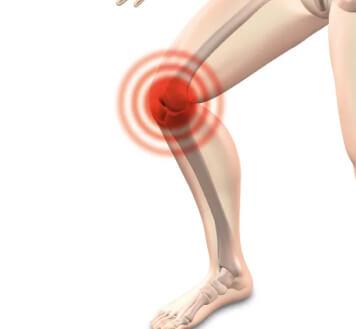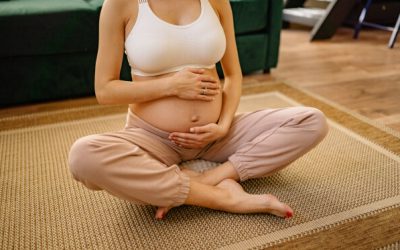What is knee osteoarthritis?
Osteoarthritis the most common form of arthritis, it affects the synovium (membrane around the joint), causes thinning of the cartilage in your knee and the joint surfaces to become rougher leading to stiffness and pain. This process affects all people at some point in their life, and it’s considered normal wear and tear. Certain joints, however, are more susceptible to these changes such as the knee, hip, big toe because of their weight-bearing function.

“There’s no cure for osteoarthritis, but the condition doesn’t necessarily get any worse over time and a number of treatments are available to help relieve the symptoms”
Symptoms of knee osteoarthritis
Osteoarthritis can affect anyone at any age, but it’s more common over 50. Early detection and appropriate management will help slow down the progression of osteoarthritis and help with the symptomology.
Main signs and symptoms of osteoarthritis:
- Knee pain
Usually is intermittent but flare-ups occur and it can be perceived as a dull and aching sensation which gets worse with strenuous activities such as stairs, squatting, kneeling. Resting and ice help to ease off the symptoms.
- Knee stiffness
Joint surface approximation due to the thinning of the cartilage and swelling in the area makes the knee stiff and less flexible. In more advanced stages people might find it difficult to fully straighten their knees as knee range of motions gradually decreases.
- Inactivity makes it worse
Often the pain is worse in the morning after sleeping or after long periods of not moving around.
- Knee swelling
Osteoarthritis irritates of all the surrounding tissues and it causes the knee joint to swell up (i.e. accumulation of fluid in the knee). A swollen knee may feel hot and sore to the touch.
Causes of knee osteoarthritis
- Age
The older we get the more our body experience normal wear and tear this makes the joints prone to osteoarthritis.
- Obesity or extra weight
Knees are weight-bearing joints hence any additional weight can strain the knees and increases the chances to osteoarthritis development.
- Joint trauma
Or even joint problems such as gout, can increase the risk of developing osteoarthritis.
- Family history
There is also a genetic influence on the development of osteoarthritis.
Treatment of knee osteoarthritis
A summary of the treatment options:
- Exercise
Strengthen the muscles of your knees and legs and keep the joints mobile.
- Lifestyle changes
Such as maintaining a healthy weight and exercising regularly
- Medication
To relieve your pain
- Supportive therapies
To help make everyday activities easier.
- Surgery
Only in cases where other treatments haven’t been effective or where one of your joints is severely damaged.
- Exercise
Is a vital component in any treatment plan for people with knee osteoarthritis. Regular exercise has the potential to reduce your symptoms, improve your overall functionality and help maintain an appropriate weight. Age and level of fitness are considered but they are not a limiting factor. Physical activity regimen must include a variety of strengthening and stretching exercises targeting all the muscles (including those around your knees) and to improve your overall fitness.
- Maintain appropriate weight
Being overweight will likely make your knee symptoms worse. It is important to manage your weight by having a more active lifestyle, exercise regularly and adopting a healthy diet.
- Manual therapy
Inactivity will cause muscles and joints to become weaker and stiff, which will probably make osteoarthritis symptoms worse. Manual therapy is a treatment provided by an osteopath, physical therapist, physiotherapist, this includes stretching techniques to keep your joints supple and flexible.
- Medication
Your doctor will be able to discuss with you about medicines that can help with the symptoms of osteoarthritis, including painkillers, anti-inflammatories, and topical gels.
- Knee surgery
In most people with knee osteoarthritis surgery is the last option. Usually is considered if the symptoms are severe and other treatments are not effective. Knee replacement surgery may be an option.



